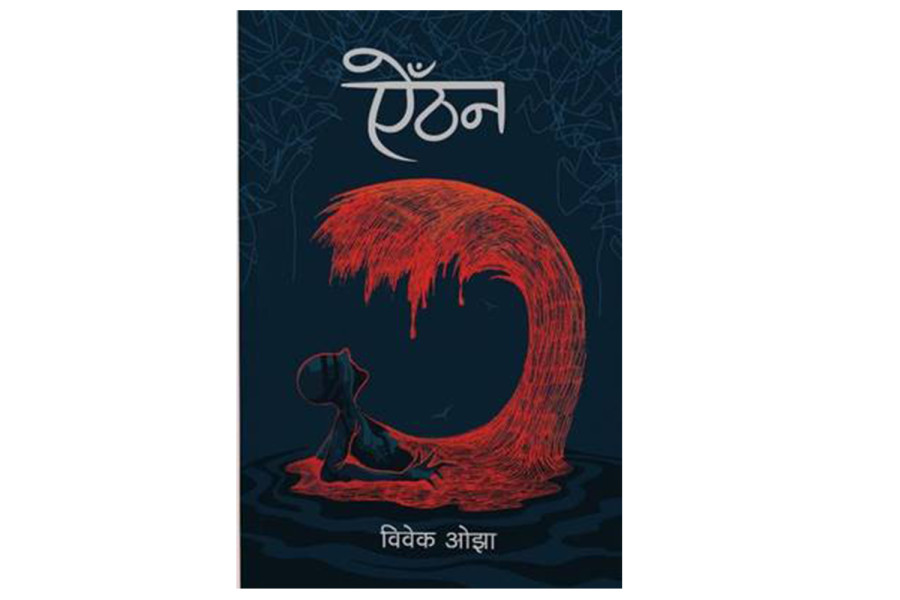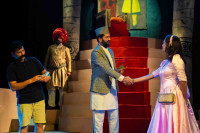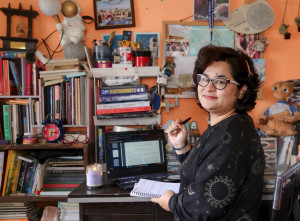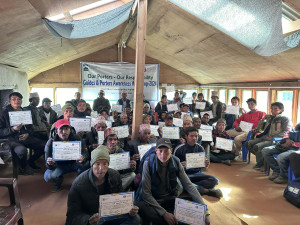Culture & Lifestyle
A reflection of war and its victims
Through skilful storytelling and masterful prose, Bibek Ojha’s Madan Puraskar-winning novel ‘Ainthan’ sheds light on the harsh realities of the Maoist insurgency.
Aarati Ray
Throughout history, literature has been a profound tool for delving into the intricacies of wars and conflicts, regardless of the era or culture. Wars and conflicts have left an indelible mark on the pages of literature, resonating deeply with readers around the globe.
Authors often draw from personal experiences or those of others to offer a firsthand portrayal of the emotional and psychological toll of war. For instance, ‘The Diary of Anne Frank’ vividly captures the life of a Jewish girl hiding from the Nazis during World War II.
Historical fiction is another avenue authors explore to depict the human aspects of conflicts, intertwining real events with fictional characters and narratives. ‘The Kite Runner’ by Khaled Hosseini, for example, depicts the repercussions of the Soviet invasion of Afghanistan.
There’s also a genre of anti-war literature that advocates for peace and comprehension, exemplified by works like ‘Catch-22’ by Joseph Heller, which satirises the absurdities of war and bureaucracy, and ‘Slaughterhouse-Five’ by Kurt Vonnegut, delving into the trauma of war through the lens of a time-travelling soldier.
In Nepal, too, there has been a surge in books reflecting on the Maoist insurgency. Bibek Ojha’s Madan Puraskar-winning novel, ‘Ainthan’, confronts the futility and horrors of conflict, advocating for peace and understanding. Set against the backdrop of Nepali society during the Maoist armed movement, ‘Ainthan’ can also be classified as historical fiction.
The author makes it clear that ‘Ainthan’ is anti-war literature that critiques the senselessness and horrors of conflict, advocating for peace and understanding from a humanistic perspective.
At its core, the narrative revolves around a prisoner of war, whose journey unfolds amidst the chaos and carnage of conflict.
From the beginning, Ojha's writing is immersing, it transports readers to a world where distinguishing right from wrong is challenging, and the reverberations of violence are palpable. Each character shares their own difficult story through flashbacks, illustrating the toll of war on people’s lives.
One notable aspect of the novel is Ojha’s language, which oscillates between poetic elegance and stark brutality. Through evocative imagery and meaningful metaphors, Ojha portrays a society torn apart by conflict, where ideological differences and physical confrontations are closely linked. The dialogues are full of strong emotions, showing how deeply the characters feel and how important their beliefs are to them.
The novel’s popularity can be attributed to its robust characters, meticulously crafted with depth and complexity. From the prisoner of war dealing with the pain of being captured to the guerrilla commander struggling with conflicting feelings of duty and morality, Ojha’s characters are imperfect and deep, facing the tough choices of war with bravery and openness. It’s their human side that stands out amid conflict, reminding readers of the strength and endurance of humans.
In ‘Ainthan’, everyone suffers because of comrades fighting for change. The main character, Baban, is captured and tortured by the army. Later, when he escapes into the forest, he cries out, “Let me go, where there is no shadow of the gun.” This line is heart-wrenching and prompts readers to ponder the existence of a world free from violence or conflict. It also makes one wonder if such a place truly exists, or if it's just an idealistic utopia imagined by the author.
The sad depiction of social challenges towards the end of the story, where leaders run away and things don’t change much despite big sacrifices, reflects not just what’s happening in politics today but also shows a timeless truth about power and advantage.
The ending might not be satisfactory for the audience who, after witnessing numerous struggles of characters, want to see their happy ending.
During Nepal's civil conflict from 1996 to 2006, the Communist Party of Nepal (Maoist) opposed other ruling parties like the Nepali Congress, resulting in over 17,000 deaths and 2,500 disappearances.
Both sides were guilty of human rights violations and breaches of international humanitarian law. In 2006, a Comprehensive Peace Accord was signed to end the decade-long war, pledging to establish truth and justice for the atrocities committed.
Despite initial efforts, a 2014 amnesty law faced criticism, leading to a 2015 Supreme Court ruling that deemed the Truth and Reconciliation Act flawed. The court mandated the government to revise the law in consultation with affected groups and human rights organisations. However, these stakeholders claim exclusion from the bill-drafting process, raising concerns about transparency and inclusivity.
The ending, devoid of hope and change, underscores the author’s intent to highlight the cruel consequences of war. It transcends the Maoist conflict, serving as a reminder of the devastation wrought by conflicts throughout history and into the future.
However, it’s worth noting that throughout the novel, we predominantly see the negative side of the Maoist conflict. The characters are consistently depicted as oppressed by comrades striving for social change. These individuals are often portrayed as perpetrators of rape, theft and violence. This portrayal prompts questions about whether these actions align with the principles of rebellion against oppressive systems or if they represent the author’s selective portrayal of the conflict.
The process, purpose, and effects of the Maoist conflict remain contentious. Although its origins are evident, its overall impact is still debated. The conflict emerged with the aim of overthrowing autocratic rule and addressing social injustices. However, the novel’s portrayal of characters, particularly the guerrillas, may cast doubt on their actions and motivations.
Presenting all comrades as negative and malevolent offers only a partial perspective, overlooking the underlying reasons behind the Maoist conflict. For many, it served as a catalyst for social change and advancement. This raises questions about whether all wars can be evaluated through the same lens. Throughout history, conflicts have arisen for various reasons, including imperialism, colonialism, revolution and independence. Viewing wars and their effects requires considering multiple perspectives, as there are always two sides.
If you think about it, even in the war between Ram and Ravan which is viewed as a beacon of justice, if you look at it from the perspective of Lankavasi, was it a happy and just movement for them?
Authors tackling historical events that shaped significant sociopolitical changes in a nation should exercise caution and strive to present both sides of the conflict. Historical fiction, for many, becomes a source akin to history itself, especially for newer generations.
Nevertheless, ‘Ainthan’ remains a powerful and thought-provoking novel that leaves a lasting impression on readers. Ojha’s skilful storytelling and masterful prose sheds light on the harsh realities of historical wars, prompting readers to reflect on the timeless truths of human suffering and resilience.
Ainthan
Author: Bibek Ojha
Year: 2023
Publisher: Sangrila Books




 18.12°C Kathmandu
18.12°C Kathmandu




.jpg&w=200&height=120)










